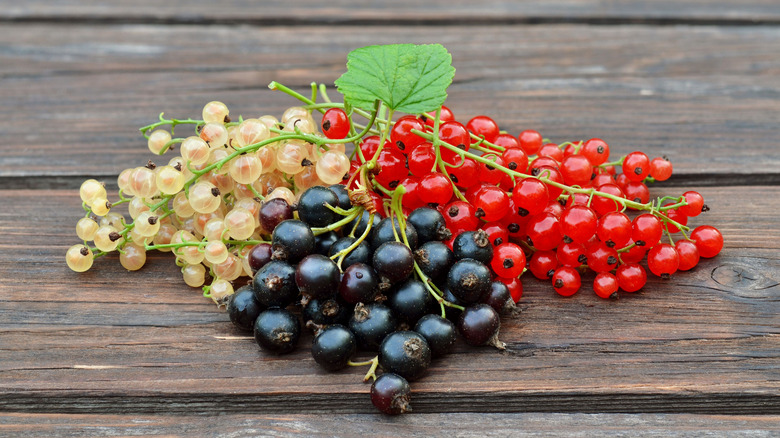This 1920s Canned Catsup Recipe Features A Unique Addition
The question isn't what can you put catsup on, but what can't you put it on? Burgers, hot dogs, french fries, scrambled eggs, and meatloaf are just the beginning. People suggests that tomato catsup is the second most popular condiment in America, surpassed only recently by mayonnaise. But, surprising as it may come, Heinz was not the original creator of catsup. In fact, its roots stretch all the way back to China circa 300 B.C., according to History. Their version contained no tomatoes whatsoever, was fish-based, and was referred to as "ge-thcup" or "koe-cheup." The word "catsup" came about in 1690 with the more recognized name of "ketchup" following in 1711, per Tastessence.
Per History, scientist James Mease is responsible for creating a catsup recipe containing tomatoes in 1812, with Heinz developing its famous recipe in 1876. While the tomato, vinegar, and sugar-based bright red sauce is what most if not all Americans consider catsup today, Merriam-Webster defines the term as, " ... a seasoned pureed condiment usually made from tomatoes." If the ancient Chinese version was based on fish, couldn't catsup be based on anything?
Hold the tomato
According to History, in the 1800s, one could find a slew of catsup recipes made from things like oysters, mushrooms, nuts, and fruits. Apparently, home cooks enjoyed these tomato-less creations because the practice stretched into the 20th century, as represented in a 1920s edition of the "Ball Blue Book of Canning and Preserving Recipes" cookbook. The University of Iowa's digital library features the book's recipe for Currant Catsup which is made by combining brown sugar, currants, cinnamon, cloves, and cider vinegar. Sweet and bright, currants are berries that no doubt give this condiment the zip that tomatoes otherwise serve in classic catsup. In addition, they add a pleasant tartness to balance the sweet ingredients.
A modern version of currant catsup featured on Food.com suggests that the final product is more reminiscent of a smooth chutney, not so much like tomato catsup. Reviewers of the recipe state that it tastes great when paired with poultry. With plenty of vinegar and sugar, expect a sweet and sour kick with a punch of heat from cayenne pepper. Could this be a replacement for classic tomato catsup? You be the judge. If it doesn't measure up on your French fries and hot dogs, give it a go on your grilled meats and barbeque sandwiches.

